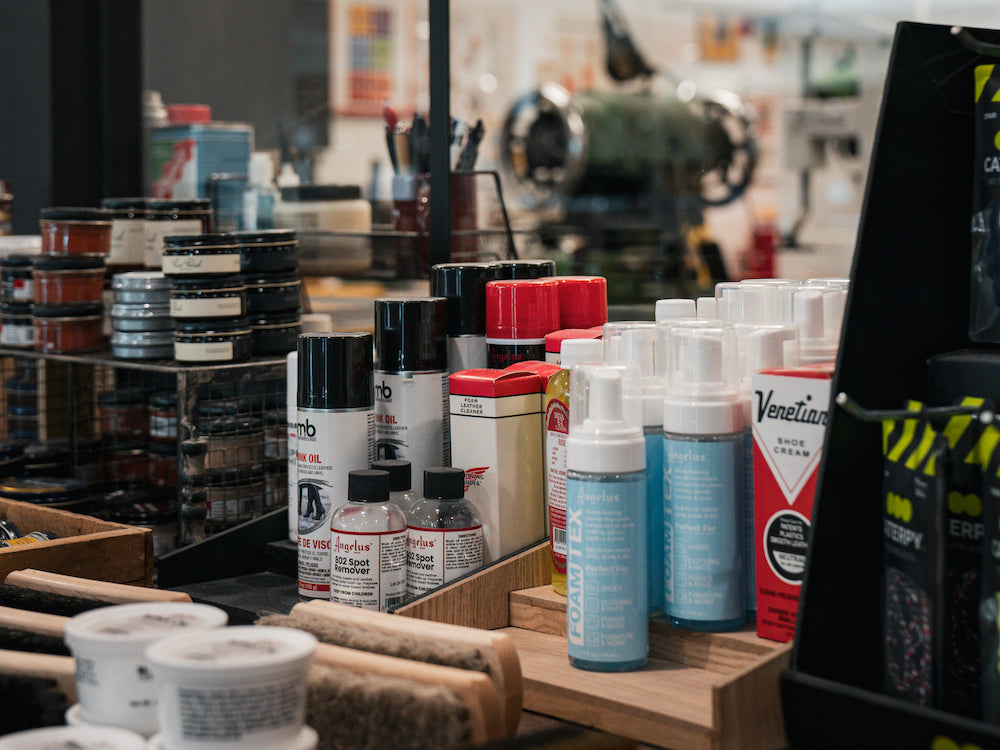Pedag Arch Support Added to Spring Step Dorotha - Orthotic Live - Recap
, by Austin Esser , 6 min reading time
, by Austin Esser , 6 min reading time
A Pedag scaphoid pad is basically an arch pad for your shoe. In this example, placing the scaphoid pad into a dress sandal is pretty visible, which doesn't translate to a great look. However, we have a solution to that.
What Tony will do is take a correlated finishing material and add that onto the scaphoid pad to match the brown sole of the shoe. That will allow the Pedag pad to blend better with the dress shoe.
Let's talk about Pedag for a moment. They are a fantastic company for over-the-counter inserts. Pedag® Insoles are hand-made in Germany from natural materials, such as cotton, bamboo, leather, cork, silver ion, wool, and shearling. Pedag provides arch pads, insoles, orthotics, and other shoe care products. Pedag’s goal has always been to promote a natural and healthy way of walking. Pedag has been a part of the Chiappetta Shoe family for years due to its great slew of products.
With this customer, in particular, we are going to shave down the left pad due to the customer having a slightly different foot from the other. Using contact cement, it will tightly form to the sole of the shoe to prevent the pad from falling out after heavy use.
The featured shoe in today's live-stream blog is the Spring Step Dorotha. The Spring Step Dorotha is a classic leather sandal that features elegant laser cutouts and an adjustable back strap. It has a genuine leather upper, round toe, adjustable back strap, lining, and padded insole. The heel height is approximately 2"" stacked and has a 1/4"" platform.
The one drawback of the shoe is that it doesn't have a lot of arch support. The Pedag scaphoid pad will be pasted on the inside part of the shoe to align with the arch of the user's foot. That would take care of the lack of arch support for the Spring Step Shoe. The scaphoid pad has a leather outer cover and we will be adding a villadon side to the pad too.
It's important when gluing the pad, that you don't just wrap the edges, but the side too. With a sandal, normally the bottom edge of the scaphoid pad is exposed due to how the upper of the sandal is built. That is why you should wrap the pad down a touch more than with a traditional shoe.
The reason why just buying a pad off the internet and trying to place it in your shoe by yourself won't necessarily work is because each foot is different even if it has the same general need. We recommend visiting your local cobbler/shoe store repair to have them assess your foot before taking action on how to solve your foot pain. All of today's blog is done while the customer waits in our storefront as this process only takes around 10 minutes to complete.
After receiving your orthotic modification, traditionally it takes 4-6 hours of use for the Pedag scaphoid pad to mold to the footbed of the shoe. If you have a cork footbed, it would take 10-15 hours of use to fully mold into the footbed.
When placing the scaphoid pad on the footbed, you don't want the front end to be close to the side. You want to tilt it about an eighth of an inch outwards. If you put it too far inline, you will get a large bulge on the side, which isn't very aesthetically pleasing. Follow all those steps and you now have a perfectly inserted Pedag scaphoid pad! Or just have Chiappetta Shoes take care of it.
Chia Shoes also supplies a T-Form met pad that works great with sandals for people who have forefoot or metatarsal issues.
Using a Pedag scaphoid pad is just one of many ways pedorthics can help solve your foot problem. Chiappetta Shoes offers a variety of foot pain solutions so stop by and make an appointment here.
⬇️ Below is the entire Live Stream of this episode of Orthotics Live ⬇️
⬇️ Previous Orthotics Live Blog - E22 Foot Type ⬇️


